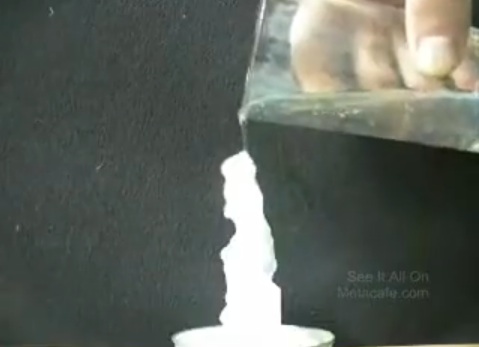 What’s “Hot Ice”, you ask? It’s not exactly water, as you might suspect. Instead it’s a totally bizarre liquid-to-solid material that just might be useful for 3D printing as support material. This mysterious substance is very simply produced: mix sodium acetate crystals with water, and cool. The result is a clear liquid that appears to be water (which it mostly is).
What’s “Hot Ice”, you ask? It’s not exactly water, as you might suspect. Instead it’s a totally bizarre liquid-to-solid material that just might be useful for 3D printing as support material. This mysterious substance is very simply produced: mix sodium acetate crystals with water, and cool. The result is a clear liquid that appears to be water (which it mostly is). However, if just one crystal of solid sodium acetate touches the mixed fluid, it dramatically changes into a solid, as the dissolved sodium acetate uses the touch as a seed from which it re-crystallizes. As you can imagine, all kinds of YouTube fun is entirely possible with this stuff and probably has been done. But we’re wondering how this tech could be harnessed for 3D printing.
It’s been proposed in online discussions whether this solution could somehow be used as a support material for future 3D printers. One can imagine a fluid reservoir of liquid material that is triggered to solidify as its extruded. Then, in theory, removal of the hot ice support material would be straightforward, perhaps by dipping your print into a suitable chemical bath. However, the nightmare scenario would be an accidental crystallization of the fluid right up the extruder and through your reservoir.
Would this work? We have no idea, as there aren’t any chemists here in the newsroom today. Nevertheless, we had great fun watching a lot of hot ice videos, and you can too.
Via YouTube (Hat tip to James Barkley)

